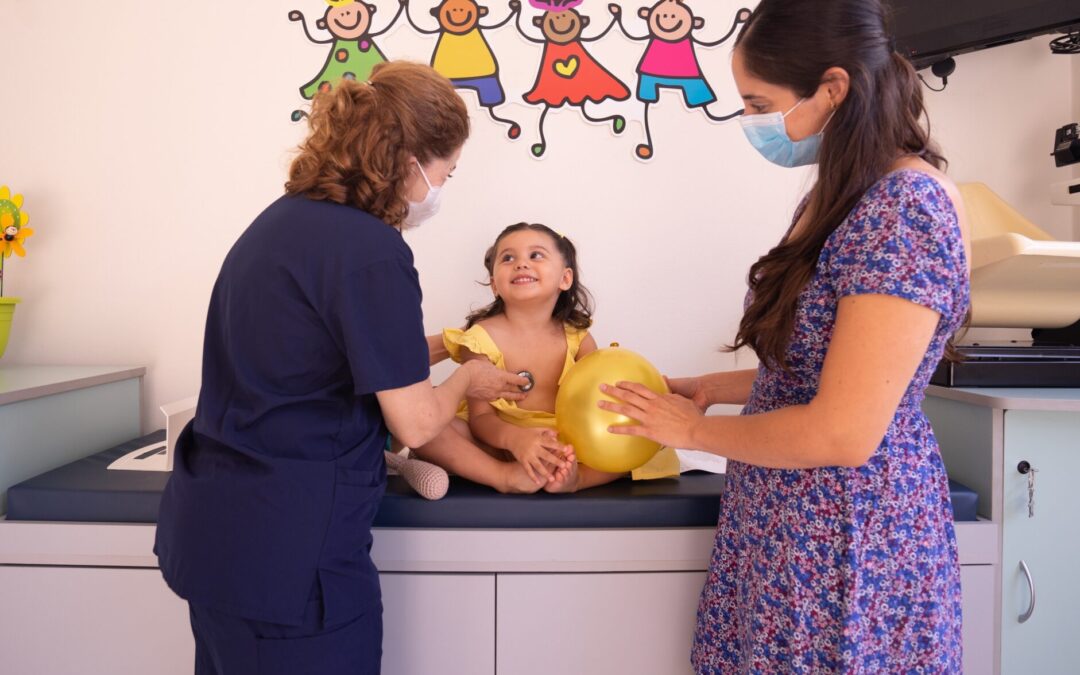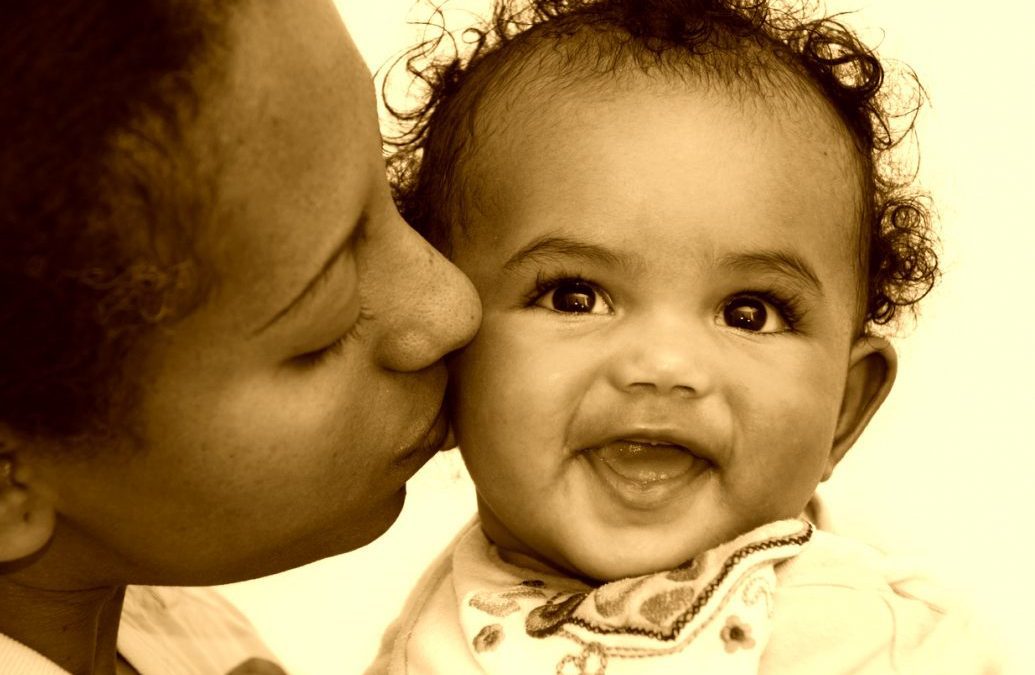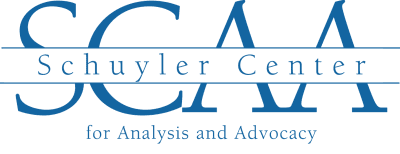
by Schuyler Center | May 3, 2022 | Early Childhood Health, Maternal, Infant, and Early Childhood, News
New York’s health care system treats parents/caregivers and their children as separate entities, and Medicaid largely relies on diagnoses to drive reimbursement, rather than paying for prevention. This can lead to higher costs, poorer outcomes, and missed opportunities for promotion of positive parent-child interactions and prevention and early intervention.
To address these shortcomings, the Schuyler Center’s most recent policy brief examines an approach that treats the child and their parent/caregiver together.
The dyadic approach, conducted within primary care, screens babies and toddlers for healthy development and adults for stressors such as depression and substance use disorders, intimate partner violence, unstable housing, and food insecurity. Connections are made to programs that can support the family and guide open conversations about the best ways to support early learning, healthy disciplinary interactions, and caregiver-child bonding.
The policy brief provides recommendations for sustainable funding for dyadic services through Medicaid and other health insurance to expand access to these services.
To highlight the recommendations in the brief, the Schuyler Center held a webinar on April 27 with speakers discussing how dyadic services are presented in pediatric settings and how they benefit families.
The brief and webinar recording are posted on Schuyler Center’s website.

by Schuyler Center | Oct 14, 2021 | Early Childhood Health, Health, Maternal, Infant, and Early Childhood
On October 13, Kate Breslin presented to the Home Visiting Coordination Initiative on Making Connections: Home Visiting and the Social Determinants of Health.
The World Health Organization describes the social determinants of health as the conditions in which people are born, grow, work, live, and age, and the wider set of forces and systems shaping the conditions of daily life. These forces and systems include economic policies and systems, social norms, social policies and political systems.
People from lower-income families are more than twice as likely to face serious illness or premature death, and the vast majority of premature mortality and morbidity is attributable to social, behavioral, and environmental factors, yet we continue to spend most health-related money on medical care, not the social determinants.
The American Academy of Pediatrics has issued policy statements regarding the important role that poverty and related social determinants play in adverse outcomes across the life course. Supporting decades of evidence about social determinants, positive outcomes for children are associated with screening for and addressing families’ social needs.
Kate’s presentation covered some of the ways New York State’s Medicaid and health systems are exploring better integration of social determinants of health into health systems and payment arrangements.
View slides from the presentation here

by Helen Smith | Oct 26, 2020 | Maternal, Infant, and Early Childhood
A quarter of a million babies are born in New York each year. Nearly half are born to low-income families and over 100,000 are born to first-time mothers. The Schuyler Center places a priority on ensuring a strong start for all children and families. This includes efforts to improve child and family outcomes through prenatal and postpartum supports and services for families with young children, including maternal, infant and early childhood home visiting.
Evidence-based home visiting programs are designed to support new parents and families with young children. As the name implies, home visitors are trained educators such as nurses, social workers, or other health professionals who visit the homes of voluntarily-enrolled families on a weekly or monthly basis. These programs offer health, psychological, parenting, and other services tailored to each family’s unique needs. Home visiting is free and voluntary. The visitor meets families in their homes, making this an affordable and convenient option for parents. Home visiting programs also play a key role in making referrals to medical providers, mental health services, social services, and other community resources to at-risk households.
Home visiting has proven benefits for both children and families. It has been shown to improve birth outcomes, increase high school graduation rates for children, lower dependence on welfare services, and reduce the incidence of child maltreatment. Furthermore, home visitation services are cost-effective, requiring little immediate spending while yielding savings over the course of a child’s life.
While this sounds excellent, there is one problem: in New York State, there is a huge discrepancy between how many people need these services, and how many don’t get them.
In July 2020, the Schuyler Center for Analysis and Advocacy collaborated with Prevent Child Abuse NY, the NYS Council on Children and Families, and Raising New York to create maternal, infant, and early childhood home visiting data snapshots that are now available for every county in New York State and each of the Regional Economic Development Council (REDC) regions. This was an effort to update the county level snapshots previously released in 2016. Each region’s home visiting capacity is based on the amount of funding they receive, which in turn, alots their capacity for how many families each program is able to serve. We at Schuyler Center realized that there was no way of knowing the needs of the community; no assessment to decide whether or not home visiting should be available to certain populations. We took on the task of comparing the number of children who needed services against the number of children who could be served—children living in poverty, with unemployed parents, or living on government services like SNAP, SSI, etc.—and found a huge discrepancy:
New York has the average capacity to serve six percent of babies in low income families and only three percent of children from age zero to three.
That is only a fragment of the data we found. The frightening fact is that the capacity for home visiting in most counties in New York State does not align with the needs within the community. Our updated data snapshots show how many children need these services; services that benefit both the mother and the child. We will be working alongside our legislative and community partners, including the NYS Council on Children and Families and Raising New York, to advance policies that will enable more New York families to access these important—often life-changing—services.
View the data snapshots and Raising New York’s policy brief: Needed Now More Than Ever, A Coordinated System of Home Visitation in the Era of COVID-19.

by Helen Smith | Sep 24, 2019 | Maternal, Infant, and Early Childhood
While the Schuyler Center has long recognized maternal mental health as an important component of women’s health, developing comprehensive policies across multiple agencies and sectors requires continuous effort. As many as one in seven women experience some form of depression during pregnancy or within 12 months after giving birth. In 2018, New York was invited to join a national learning collaborative: Moving on Maternal Depression (MOMD), convened by the Center for Law and Social Policy (CLASP). This project advances structural changes to health systems to prioritize policies proven to strengthen maternal mental health, particularly interventions that prevent, and if that is not possible, detect and treat, maternal mental health disorders. By improving maternal mental health, the project also aims to improve and strengthen early childhood development and family economic security. The New York State Office of Mental Health leads the project, with the Schuyler Center for Analysis and Advocacy serving as project coordinator, and CLASP providing technical assistance. The MOMD project reflects the Schuyler Center’s commitment to developing data-driven, evidence-based policies to prevent maternal disorders whenever possible, and to prevent, identify, and treat maternal mental disorders throughout the state and across all of New York’s diverse communities. The project – with its diverse group of passionate and engaged stakeholders – presents a real opportunity to improve the mental health of expecting and new mothers to better enable New York mothers, babies and families to thrive.
Sources: Depression in Parents, Parenting, and Children: Opportunities to Improve Identification, Treatment, and Prevention. National Research Council (US) and Institute of Medicine (US) Committee on Depression, Parenting Practices, and the Healthy Development of Children; Editors: Mary Jane England and Leslie J. Sim.
Visit The Moving on Maternal Depression (MOMD) Project in New York: An Opportunity to Improve Policies and Programs that Support Maternal Mental Health for more information on the Schuyler Center’s effort to improve maternal mental health.[/vc_column_text]

by Schuyler Center | Jun 15, 2018 | Maternal, Infant, and Early Childhood
Schuyler Center joined more than 100 advocates in calling on the New York Congressional Delegation to support the reauthorization of the Maternal, Infant, and Early Childhood Home Visiting (MIECHV) program.
Read the letter from advocates here.
Read the letter from State legislators here.
Home visiting is a smart, proven investment in our most important asset – our families. Rigorous research shows home visiting:
- Reduces child abuse neglect
- Increases parental self-sufficiency including gaining employment and finishing school
- Improves school success
With results like these, Congress should expand support for home visiting – doubling it to $800 million a year by year five – so more families can benefit. The federal program (MIECHV) must be reauthorized by September 2017.
by Schuyler Center | Apr 18, 2016 | Child Welfare, General, Maternal, Infant, and Early Childhood
April is Child Abuse Prevention Month, and is an opportunity to turn our focus—and our lawmakers’ focus—to ensuring that all of New York’s children are safe and are given a real chance to live happy, fulfilling lives. Read Kate Breslin’s President’s Message here.






Recent Comments